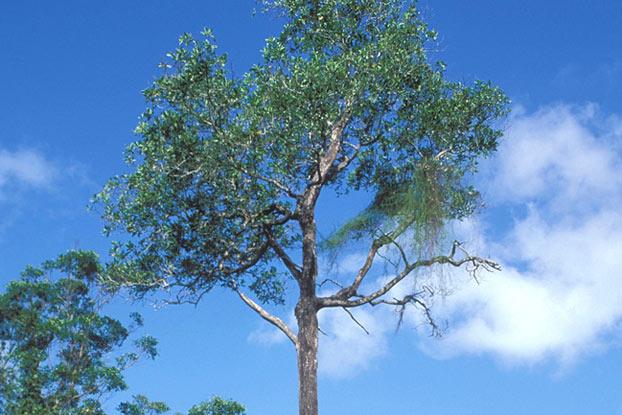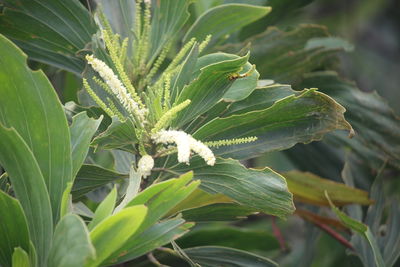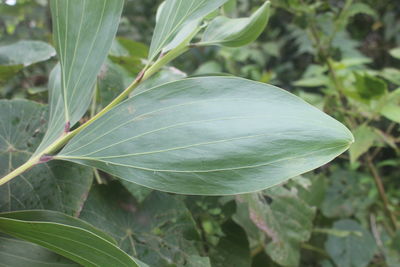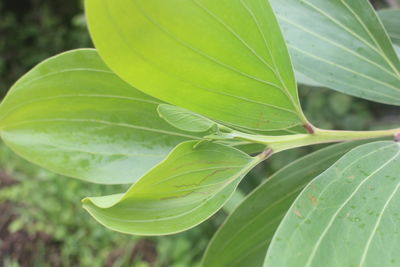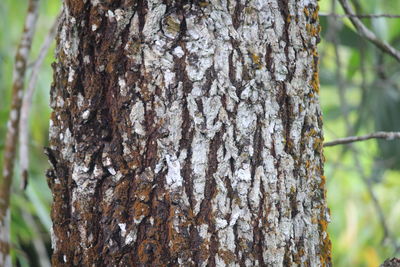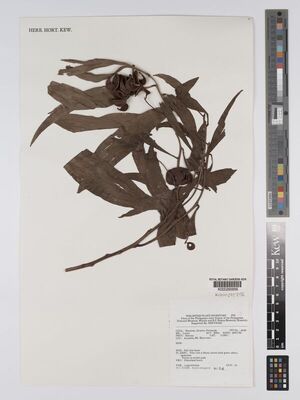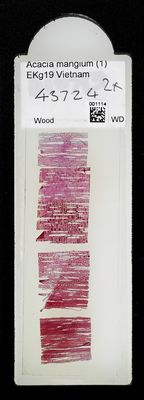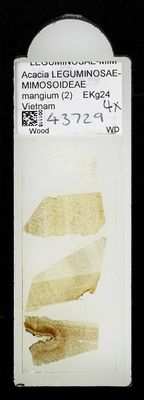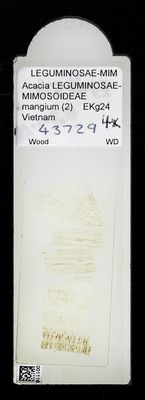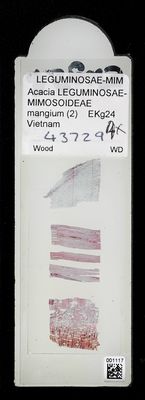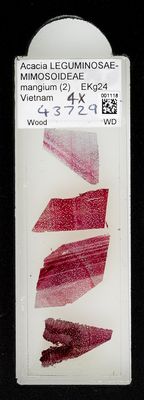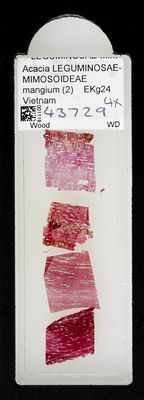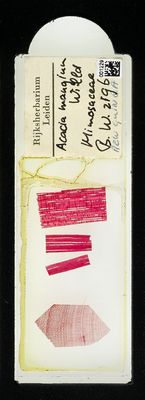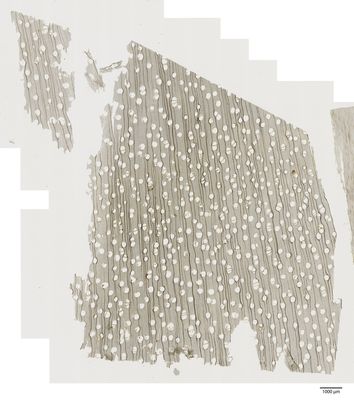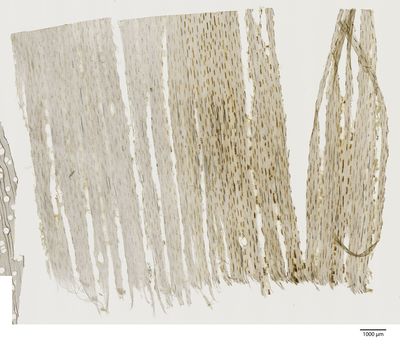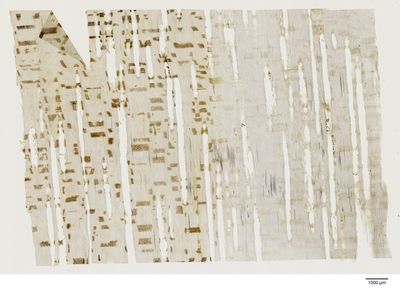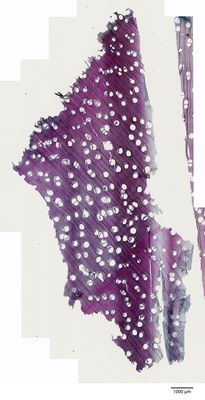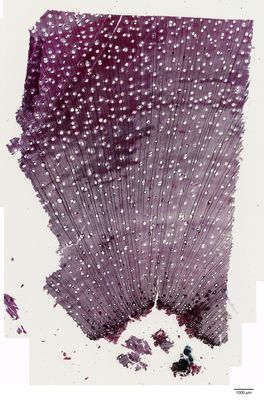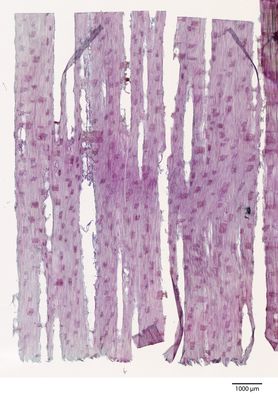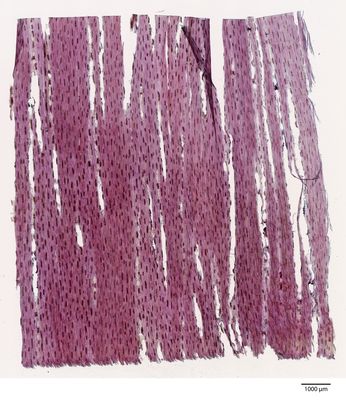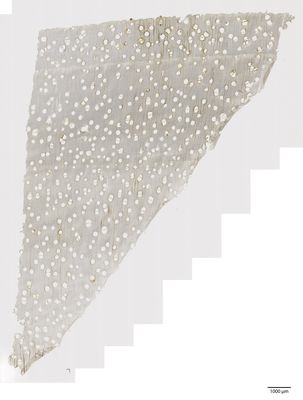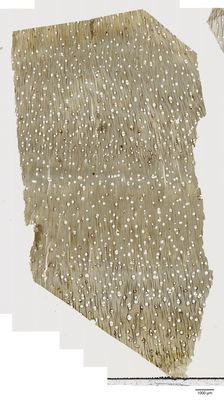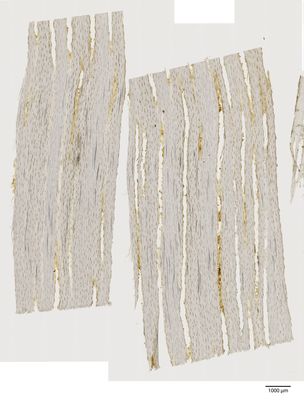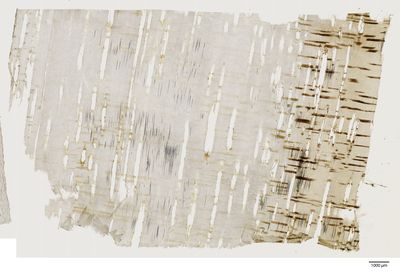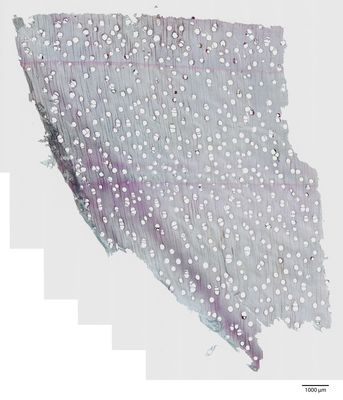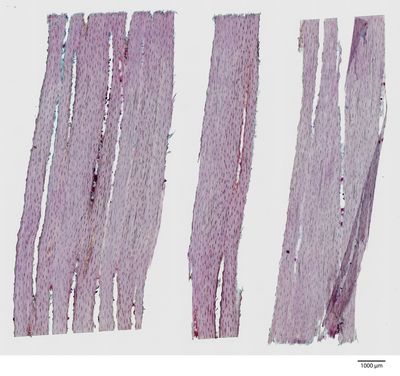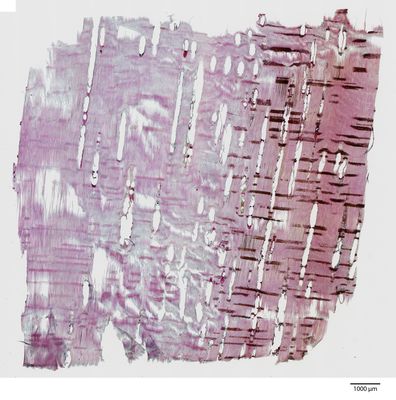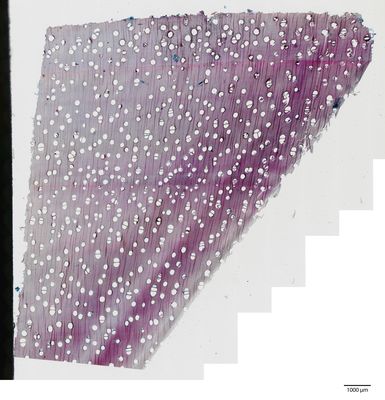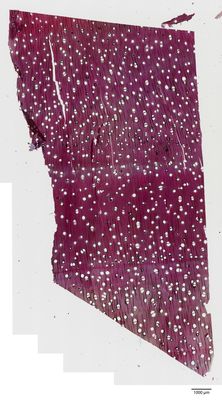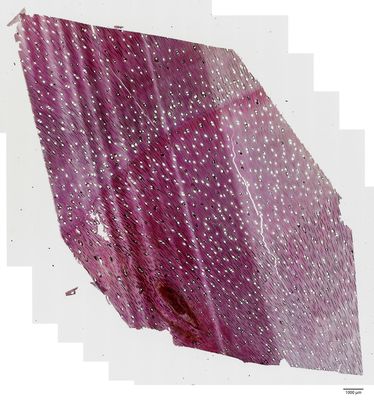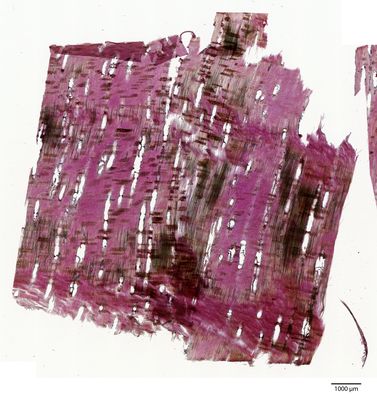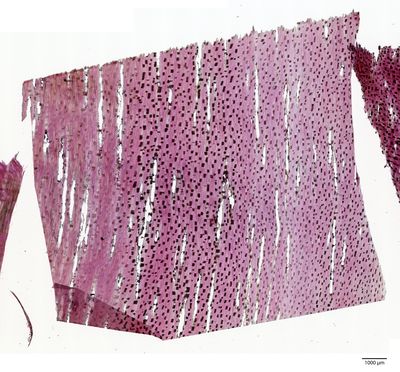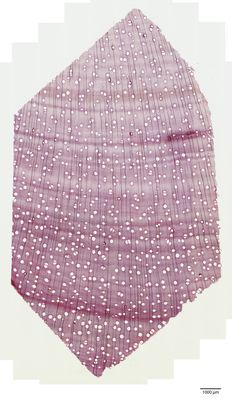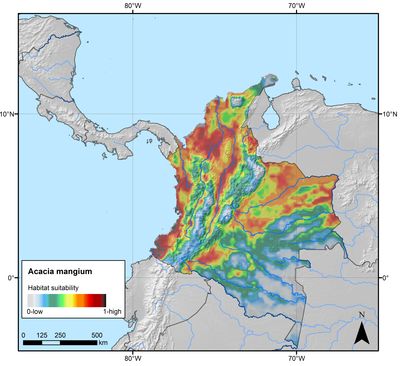Geography and distribution
Acacia mangium has a disjunct and relatively restricted natural distribution that extends from far north-east Queensland, Australia, through the Western Province of Papua New Guinea to the Indonesian provinces of Irian Jaya and Maluku. It has been introduced into many countries, most notably in Asia (China, Indonesia, Lao PDR, Malaysia, Myanmar, Thailand, the Philippines and Vietnam), but also Bangladesh, Brazil, Cameroon, Costa Rica, Hawaii and Nepal.
The natural distribution of Acacia mangium overlaps the warm and hot tropical climatic zones. In these areas the temperatures are high and equable throughout the year, with the mean maximum hottest month at 31-34°C and the mean minimum coolest month at 15-22°C. The mean annual rainfall is 1,500 to 3,000 mm, with summer (January to March) being the wettest period. Brown salwood grows best in well-drained, acidic soils (pH of less than 4.0) of moderate to low fertility. It grows well in areas of disturbance and has the potential to become weedy under certain conditions.
Description
Overview: Brown salwood is normally a large tree, which grows up to 30 m tall, with a straight trunk that can occupy over half the total tree height, and which is sometimes fluted at the base. On adverse sites it may grow as a small tree or large shrub of 7-10 m tall. The pale grey-brown to dark brown bark is rough and longitudinally furrowed. The branchlets are acutely angled and hairless.
The phyllodes (leaf-like petioles) are obliquely narrowly elliptic to elliptic, large (normally 11-27 cm long and 3-10 cm wide), with three or four main longitudinal nerves which merge at their base. The minor nerves strongly cross-connect to form a fine, elongated network between the main nerves.
Flowers: The white to cream flowers are pentamerous (have parts arranged in groups of five) and are loosely aggregated into spikes, which are 5 to 12 cm long.
Fruits: The pods are openly coiled and twisted, or sometimes tightly spirally coiled, 3 to 5.5 mm wide, leathery to sub-woody, and hairless. The black seeds are 3.5-5 x 2-3 mm, and have a small, bright, yellow or orange aril (fleshy growth) at their base.
Threats and conservation
Acacia mangium is a pioneer species which regenerates easily from seed, and is not considered to be threatened. It can become weedy outside its natural range, and this issue requires attention in areas where it is being cultivated.
Uses
Acacia mangium is one of a group of tropical Australian species that are now extensively used in commercial plantations in Southeast Asia (and also in Brazil), where they form the basis of substantial plantation-based industries. In 2006 the Asian plantations exceeded 1.5 Mha and had been established in China, Malaysia, Indonesia, Papua New Guinea, the Philippines, Thailand, Vietnam and Melville Island in Australia. Acacia mangium grows fast: saplings can grow up to 5 m tall within 5 years, with increases in diameter of up to 5 cm per year.
Paper pulp, kraft pulp and chemical pulp
Brown salwood is highly versatile and is used both on an industrial and local operator scale. The majority of large-scale plantations are used for the production of paper pulp, kraft pulp (for bags, wrapping paper, linerboard) and chemical pulp (for corrugating, medium and higher-grade products). In Indonesia alone it is estimated that over four million tonnes of Acacia pulp will be produced for the international market in 2010. Based on the current price of 550 US dollars per tonne this represents a commodity worth 2.2 billion US dollars.
Solid wood products
The growth form of Acacia mangium renders the species suitable for a wide range of solid wood products including furniture- and cabinet- making, light structural works, agricultural tools, boxes and crates. It has even been used for house construction in Australia. Much of the furniture marketed today as 'Acacia Wood' is derived from plantation-grown Acacia mangium , particularly from Indonesia.
Other uses
Other industrial products manufactured from this species include wood pellets, activated carbon and charcoal. The dense wood of mature plants is a source of good fuel, but young trees make poor firewood.
Trade names
In international trade the names 'Acacia Wood' or simply 'Acacia' are used to brand furniture and other wood products made primarily from plantation-grown Australian Acacia species such as Acacia mangium and some close relatives. The image below shows the Forestry Stewardship Council (FSC) branding of Acacia wood furniture manufactured in Vietnam and destined for the European, North American and Australian markets. (FSC is an independent, non-governmental organisation devoted to promoting responsible management of the world's forests).
Millennium Seed Bank: Seed storage
The Millennium Seed Bank Partnership aims to save plant life worldwide, focusing on plants under threat and those of most use in the future. Seeds are dried, packaged and stored at a sub-zero temperature in our seed bank vault.
A collection of Acacia mangium seeds is held in Kew's Millennium Seed Bank based at Wakehurst in West Sussex.
See Kew's Seed Information Database for further information on Acacia mangium seeds
Cultivation
Brown salwood is a fast-growing, relatively short-lived (30 to 50 years) species adapted to a wide range of acidic soils in moist tropical lowlands. It can fix nitrogen after forming nodules containing soil bacteria ( Rhizobium and Bradyrhizobium spp.) in many tropical soils, but its nitrogen-fixing potential may only be realised in many soils if adequate fertiliser is applied. It is frost-sensitive and is killed by fire only if the stem diameter is less than about 10 cm.
Mature seed requires pre-germination treatment such as mechanical scarification (scratching the surface) or boiling water to break dormancy. After suitable treatment germination is rapid and typically exceeds 75%. Flowering and seeding commence at about two to three years of age under plantation conditions. Research into vegetative propagation is continuing and progress to-date is encouraging. Plantations are generally established using containerised seedlings. Direct seeding has been tried but the results are variable. Acacia mangium stumps coppice profusely, but the coppice shoots lack vigour and are unsuitable for the second rotation. Plant spacing is governed by the need for rapid canopy closure and the end-products required. Therefore, practice varies, for example 900 stems per hectare are planted in Peninsular Malaysia and up to 1,680 stems per hectare in Sabah. In Sabah, under optimal conditions, A. mangium attains 20-25 m and 20-30 cm stem diameter in 10 to 13 years. In this same area, un-thinned stands planted at 1,075 to 1,680 stems per hectare attain maximum MIA (mean annual increment) after six years on quality sites and seven years on poorer sites.
A. mangium prefers fertile sites with good drainage, but will tolerate low fertility soils with impeded drainage. Soil depth and topographic position can influence yields; volume production on deep alluvium may be almost double that on skeletal soils. There are also significant differences in performance under cultivation with respect to distance from the equator. Growth is generally faster at sites near the equator, with a mean annual height increment of about 3 to 4 m. Slower growth occurs on sites further from the equator.
Brown salwood at Kew
A specimen of Acacia mangium is held in Kew's Economic Botany Collection. The details of this specimen can be viewed using ePIC (the electronic Plant Information Centre).
Dried specimens of Acacia mangium are held in Kew's Herbarium, where they are available to researchers by appointment. The details of specimens collected in the Philippines in 1992 can be viewed online in the Herbarium Catalogue.

